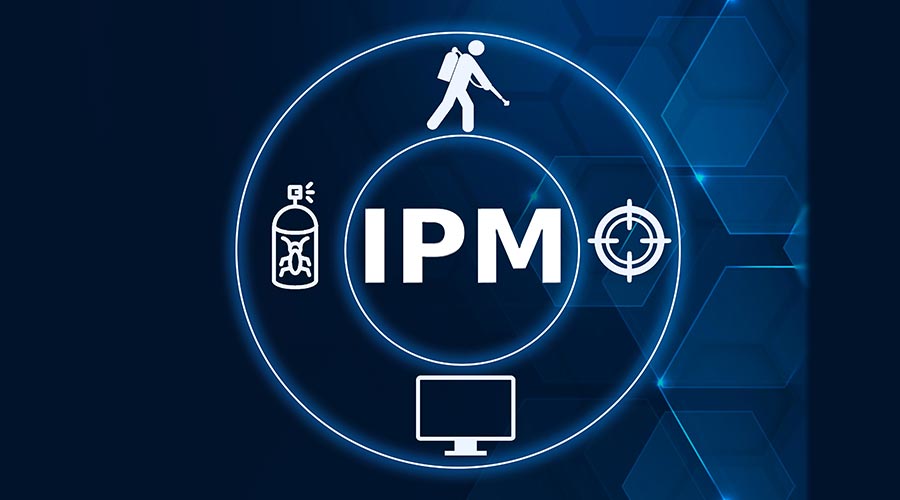
Contributed by Jim Fredericks, Senior Vice President of Public Affairs for the National Pest Management Association (NPMA)
The new year is a great time to set your business up for success by determining your goals for the year and evaluating your current systems to ensure you’re on the right path to achieve them. A key goal that every business should keep top of mind during this process is pest control. If not properly addressed, pest issues can be extremely detrimental for businesses — causing negative reviews, loss of customers or employees and even disease transmission. The best way for facility managers to protect their business from these threats is to address any pest issues and prevent new infestations by working with reliable pest control partner to implement an integrated pest management plan.
Choosing a Pest Control Partner
If you don’t already have an on-going relationship with a pest control company or aren’t happy with your current service provider, now is a great time to evaluate potential partners in your area. To determine which company is the best match for your facility’s needs, consider the following recommendations:
Evaluate pest control companies that are members of national, state or local pest control associations: Being a member of these associations means the company is committed to protecting public health and property and has a desire to receive ongoing education about new technologies and treatment techniques. It also means these companies strictly adhere to state and federal regulations.
Research companies and ask for recommendations: Inquire about companies and services from others in your industry as they face similar challenges regarding pest control. When meeting with a prospective pest control partner, always ask questions about their pest control practices and other clients they serve within your same industry.
Understand service agreements: Before finalizing the agreement, carefully read contract terms to fully understand what pests and services are covered, as well as any guarantees that may be given. Be sure to ask questions about anything that seems unclear.
What is Integrated Pest Management or IPM?
The right pest control partner will develop and implement an integrated pest management plan (IPM). Although it may sound new, IPM is based on old-fashion common sense. The foundation of an IPM plan is to stop pests before they invade. It involves working with a pest control professional to create a personalized plan that keeps the property free of pests and the threats they pose. This approach to pest control is by no means a one-size-fits-all plan but rather a unique partnership tailored to your facility’s location and needs.
Integrated pest management focuses on three basic techniques: inspection, identification and control.
• Inspection: This is the first phase of the IPM plan where pest control professionals perform a thorough inspection of the facility to pinpoint any problem areas. They will search for current pests residing in the facility and meticulously audit the interior and exterior of the building, taking note of any areas conducive to pest activity.
• Identification: This phase is where professionals work to identify the types of invaders that your facility is currently dealing with. While identification is less challenging when the culprits are visible, sometimes all one is left with are clues that they have been there. Droppings, for example, are a telltale indicator of a rodent infestation. However, there are other more subtle signs that a licensed pest control professional can spot, highlighting the importance of an IPM plan, as professionals can identify signs of pest infestations that could go unnoticed by the untrained eye.
• Control: The final phase of an IPM plan is the treatment stage. This phase is where storage facilities and their pest management partner work together to prevent infestations from occurring in the facility or implement an action plan to eliminate the existing pest problem and prevent future ones.
Pest Prevention Tips
Pests are adaptable and resourceful so being proactive is key. As part of an IPM approach, a pest control professional may suggest that facilities implement the following steps to minimize the chances of an infestation:
• Seal any cracks and crevices around the building, including entry points for utilities and pipes.
• Dispose of garbage regularly and store it in sealed containers.
• Keep tree branches and shrubbery well-trimmed and away from the building.
• Replace weather-stripping and repair loose mortar around the building’s foundation and windows.
• Monitor drainage and channel water away from the building.
• Perform regular indoor inspections of storage areas and unfrequented spaces for droppings and other signs of pest infestations.
Proper pest prevention and control is a vital part of running a successful business. Year-round collaboration with a reliable and knowledgeable pest control partner, paired with ongoing prevention can set you up for success in 2024 and beyond.

 The Down and Dirty on Cleaning in Virus Season
The Down and Dirty on Cleaning in Virus Season How Surfactant Use is Expanding in Commercial Cleaning
How Surfactant Use is Expanding in Commercial Cleaning Clean Buildings Conference
Clean Buildings Conference